It’s a perfect autumn morning in Pretty Valley. The grass and tents are frosted with ice, the air is cold and invigorating, the silence immense. Sitting and waiting for the sunlight to spread across the plains from the hills to the west, it feels so silent you can hear the earth itself humming. In the shallow valley below, white mists form above the marshy landscape and braided waterways, rising until they meet a temperature inversion, which creates a ceiling effect that stops further upward movement. The flat topped mists then flow slowly towards the south east. Finally, the sun starts to warm my back. The air fills with bird call, the parrots sweep through, chitting as they fly past. After a cold night, it seems like everyone and everything is glad to be alive this morning.
Pretty Valley is one of my favourite spots. Such a subtle mountain landscape, easy on the eye. Ringed by low ridges, you can’t see the distant horizon and feel held in, rather than on top of, the Bogong High Plains. And, of course, those incredible old snow gums. Every time I visit, I wander around and visit my old friends, checking on the ones who are dying because of the dieback, or recovering after an infestation, and the vigorous regrowth. This is one of those remaining pockets of old, old snow gums.
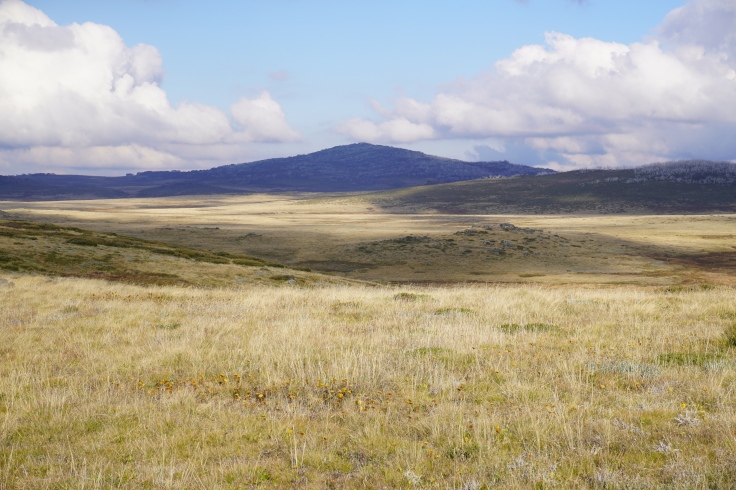
In places like this, I often feel like I am at the centre of something special. A heart place, a welcoming place, special because of its resonance, its beauty, its uniqueness. I think of Edward Abbey and his wonderful writings about the high deserts of the south western USA in his book Desert Solitaire. Once, while wandering through a series of canyon, he was so overwhelmed by beauty he asked “Is this at last the locus Dei (the “place of God”?). There are enough cathedrals and temples and altars here for a Hindu pantheon of divinities. Each time I look up one of the secretive little side canyons I half expect to see not only the cottonwood tree rising over its tiny spring—the leafy god, the desert’s liquid eye—but also a rainbow-colored corona of blazing light, pure spirit, pure being, pure disembodied intelligence, about to speak my name.”
As I sat there mesmerised by the play of light on the valley below, my mind reached out to some of my other special places. Like the Howitt Plains as you walk north towards the hidden gem of the Macalister springs and Vallejo Gantner hut. It feels so remote, and you can sense mountains and river systems stretching away in all directions, the rumple of an old blue coloured land, with valley and ridge alternating, repeated for mile after mile. The stately elder snow gums that are still standing amongst the ragged mad rush of regrowth. Those snow grass plains that tempt you to wander. It feels to me like the ‘heart’ of the Victorian alps.
There are so many others, like that wild open country around Jagungal, Lake Tali Karng – hidden away in the hills, those incredible gnarly snow gums on the summit of Mt Wills, the wonderous Big / Mitta River that starts off heading south, changes its mind and then turns north to join the Murray. Those forests of the Baw Baw plateau that are now reaching middle age, offering hope that the mountain forests might yet recover from the horrible fires of the last half century…
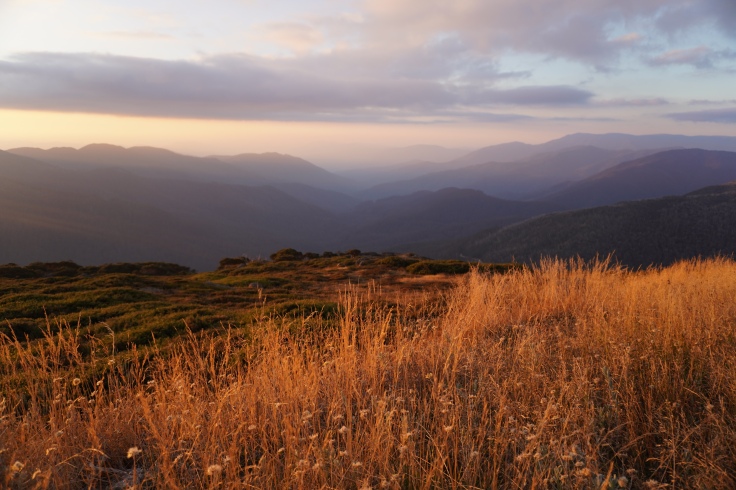
Each of us has such heart places, which we find depending on our interests, sense of aesthetics, or the sheer beauty of a place. And the ones that are widely loved by many become famous among the outdoor community. If you’re a hiker, backcountry enthusiast or trail runner, who hasn’t heard of the Razorback? Or gazed at the dramatic eastern gullies of Feathertop and wondered about skiing or riding in there. Or wandered across the narrow plateau of the Main Range of the Snowy Mountains to the western faces and looked down almost a kilometre of vertical height to the valley below?
More than a half century ago, poet and climber Gary Snyder wrote a long poem that was set in a time before humanity. He said:
“In some future time, there will be a continent called America. It will have great centers of power called such as Pyramid Lake, Walden Pond, Mt. Rainier, Big Sur, Everglades, and so forth; and powerful nerves and channels such as Columbia River, Mississippi River, and Grand Canyon.”
https://sacred-texts.com/bud/bear.htm
I don’t see these places so much as being about power (although some, in my view, undoubtably do have spiritual power or presence). To me they mostly seem like Nodes in a precious landscape. Sometimes they connect physically, sometimes they are isolated pockets. Sometimes they can be considered as Icons given the fact that many people have love for the same place. An Icon is ‘a person or thing widely admired especially for having great influence or significance in a particular sphere’.
I have personal connection to many places in the high country, as do many others. I love to hear people’s stories about their special places. And I constantly look for literature that speaks of the land itself (rather than just the human drama of what happens on country). There is a bit of an assessment here of the literature of the high country. https://themountainjournal.com/2022/07/10/the-literature-of-the-high-country/
I feel sad that there are so few widely known stories of the high country from First Nations people. The European history has long eclipsed and obscured the older stories, and few outside Aboriginal communities have pursued them.
Thankfully as traditional owner groups reassert their connection to the high country, at least some of this knowledge is returning to the broader public domain.
For instance, as part of its contribution to the conversation about ‘what next’ for the native forests of the Central Highlands of Victoria now that native logging has ended, the
Taungurung Land and Waters Council (TLaWC) has released a beautiful report outlining the values of the area and Taungurung aspirations for this country. It includes hopes for future management of the Deberra Biik (the bogong moth Cultural landscape that covers alpine areas on Taungurung Country in the Central Highlands, including sections of the Rubicon state forest – the Mt Bullfight area – and Mt Torbreck).
You can find the report here.
Click to access RapidBioculturalAssessment_CHRFA_Final_20240319.pdf
It is a real joy to see this document – it adds detail and hence richness to the mainstream understanding of this specific mountain country.
It also provides us – non indigenous people – the opportunity to actively support the expressed First Nations aspirations for Country by writing a submission to the consultation process.
You can find out more and make a submission via this page created by Friends of the Earth.
https://www.melbournefoe.org.au/central_highlands_forests_submissions
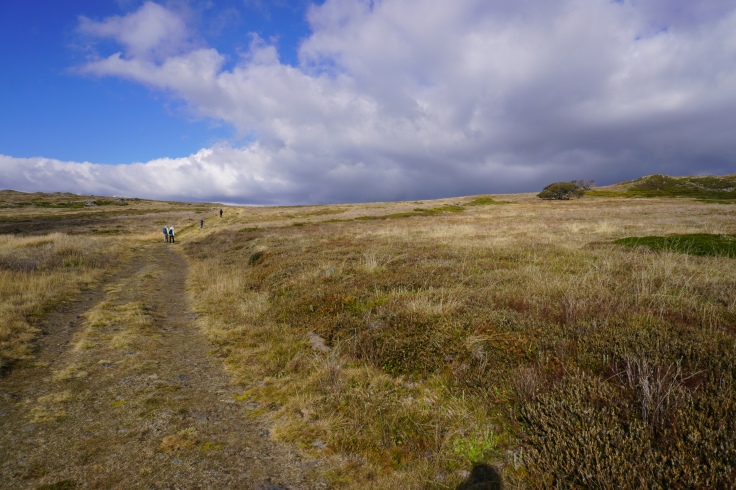












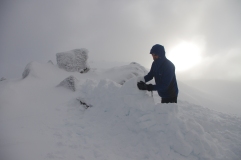













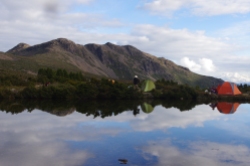


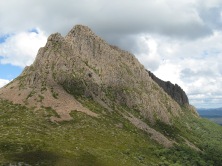






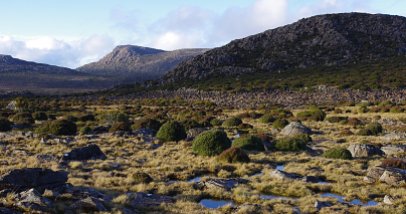



















Leave a comment